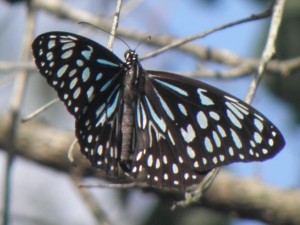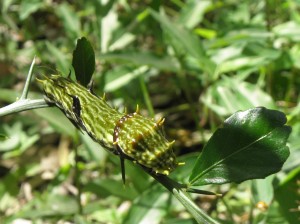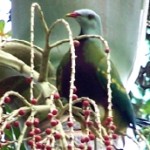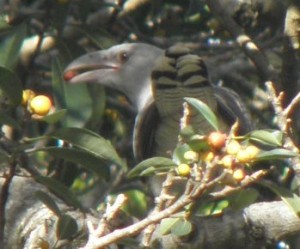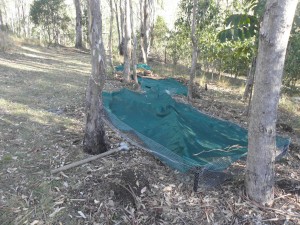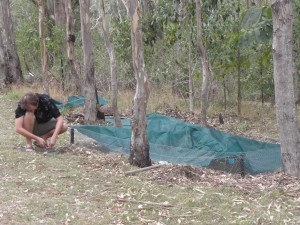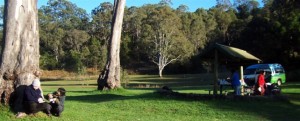The butterfly walk on the Araucaria property has been planted out with the food plants of local caterpillars, divided into the five major families of Australian butterflies.
Every month I walk the trail 5 times on 5 separate days, recording the butterflies I see: once in the morning, twice at mid-day (when butterflies ae most active), once late afternoon and once after dark (when some of the caterpillars are more active). For several years we saw no obvious increase in butterflies, but suddenly this summer they more than doubled in frequency of sightings
So far our butterflies include:
Pieridae (whites and yellows)
- Most common: Lemon Migrant and Grass Yellow
- Others: Caper White, Albatross and (introduced) cabbage white
- Caterpillars: none as yet, but many grass yellows seen apparently laying eggs on Breynia leaves
Nymphalidae (nymphs, browns and danains):
- Most common: Monarch (introduced), evening brown, aeroplane, lesser wanderer
- Others: common brown, blue tiger, jezebel nymph, common crow, varied eggfly, meadow argus, admiral
- Caterpillars: monarch
Lycaenidae (blues and coppers):
- Most common: ? several unidentified (tiny and very fast!)
- Others: pencilled blue, speckled line-blue, wattle blue
- Caterpillars: none seen
- Most common: orchard butterfly (several on finger lime in our butterfly walk, also on orange tree near house)
- Others:blue triangle, dingy swallowtail
- Caterpillars: orchard butterfly, blue triangle
Hesperidae (skippers and darts):
- Most common: orange palm dart
- Others: regent skipper, common red-eye, orange ochre and a few unidentified (as for Lycaenid spp above)
- Caterpillars: orange palm dart, in roll of palm-leaf

